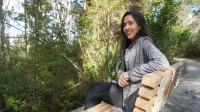See Our Latest Blogs
Explore our blogs and learn about singing❤️

What Singing Warm-Ups Should You Really Do?
🎤 What Singing Warm-Ups Should You Really Do?
If you want to improve your singing but often feel unsure about which exercises to practice — you're not alone. Today, I want to break down one of the most common questions I hear:
"What warm-ups should I do when I practice?"
🧭 The Real Goal of Singing Practice
As a student, it’s totally normal to rely on your teacher in the beginning. But your long-term goal shouldn’t be to depend on your teacher forever. The more advanced you become, the more independent you should feel in your practice.
Many singers notice something strange:
They leave a lesson feeling great — like their voice is finally working. But the next day, they try to practice, and it just doesn’t feel the same. Why is that?
💡 Why You Can’t Just Repeat the Hardest Exercise
This happens because most singers try to practice isolated exercises without understanding the sequence behind the lesson.
A typical vocal lesson has phases:
The Contact Phase – where you gather information about your voice and slowly transition from speaking mode to singing mode with familiar exercises.
Development Phase – where we introduce or refine a more challenging exercise, but only after your voice is ready.
Many singers skip the contact phase and jump straight to the hardest thing from the lesson — and that doesn’t work. It overwhelms the nervous system. If your brain feels like it’s under threat, it won’t allow your voice to flow freely.
✅ Start with Familiar, Easy Exercises
Your practice should always begin with something familiar and easy. These are often called “high-reward exercises” — ones you’ve already mastered, feel safe doing, and don’t have to think too much about. You can do them lying down, standing up, or even with someone watching. They’re already habits.
This familiar entry point tells your nervous system: you’re safe. And when your system feels safe, learning becomes much easier and more effective.
Over time, the difficult exercises will become part of your “easy” toolkit too. But you get there by building gradually.
🧠 Build Your Vocal Intuition
One of the most powerful skills a singer can develop is vocal intuition — the ability to tune into your voice and ask:
“What does my voice need today?”
Yes, you can draw from the exercises you already know. But the real magic happens when you learn to feel what’s right for you in the moment. This intuition is what eventually frees you from needing constant external guidance.
🔄 Descending First: A Pro Tip
When starting an exercise, don’t immediately jump into your highest range. Begin gently — ideally with descending scales (going down first), which bring you into better contact with your vocal muscles. This reinforces a sense of vocal safety and allows your body to warm up gradually.
This gentle approach activates your learning zone without triggering stress — exactly what you want when preparing to sing.
🧘♀️ Add Movement to Support Your Voice
Body movement can dramatically support your vocal practice. In my sessions, I often teach specific movements designed to enhance the voice. But even if you haven’t worked with me, you can still tune into your own body.
Ask yourself:
Do I feel like raising my arms when I inhale?
Do I want to walk in place while vocalizing?
Would it help to stretch gently before I sing?
The body is meant to move — and movement supports both your breath and your voice. The more you listen to your body, the more it will guide you toward what you need.
🔁 To Sum Up
Here’s how to structure your vocal warm-up routine:
Start with easy, familiar exercises – the ones that feel automatic and safe.
Use descending patterns first – to connect with your voice and build a sense of ease.
Move gently – listen to your body and use supportive movements as needed.
Build vocal intuition – tune in to what your voice needs today.
Only then, add your more challenging exercises or songs.
By following this sequence, you’re not only protecting your voice — you’re setting yourself up to actually improve every time you practice.
Some feedback from past students!
Frankie Lam

Highly recommended; Jorgelina, the primary singing instructor knows her stuff and really helped guide me through finding my mixed voice.
She has huge amounts of knowledge on the science and theory behind singing and approaches lessons in a very structured but still personalised manner. Very happy with my decision to take lessons here.
Jess Reeve - Taylor

I really struggled with the high notes before coming to Jorgelina! She's coached me through so many techniques and although there is so much to learn I feel like I've seen lots of progress already. My confidence has grown massively since joining the group classes too and she encourages performing at every opportunity. I love that Jorgelina takes a holistic approach to singing and understands that it's not just about sounding great, the voice also has strong connections to the body and mind. Thanks Jorgelina!
Rupert Wilson

Bruh. Jorgelina is an awesome singing teacher! Super knowledgable, very engaged and 100% passionate. She's helped me a lot. Her methods and techniques feel organic and natural. She moves at your pace and is super supportive about you achieving your singing goals. Would recommend her to anyone with a vagus nerve (thats everyone btw!).
Get In Touch
Learn to sing with us!
© 2025 The Functional Singer - All Rights Reserved


Facebook
Instagram
Youtube